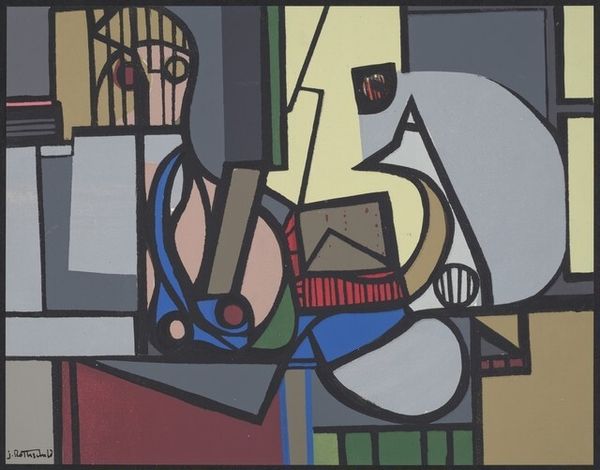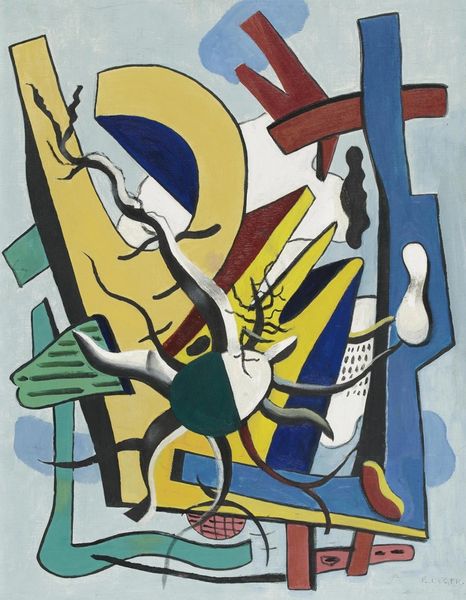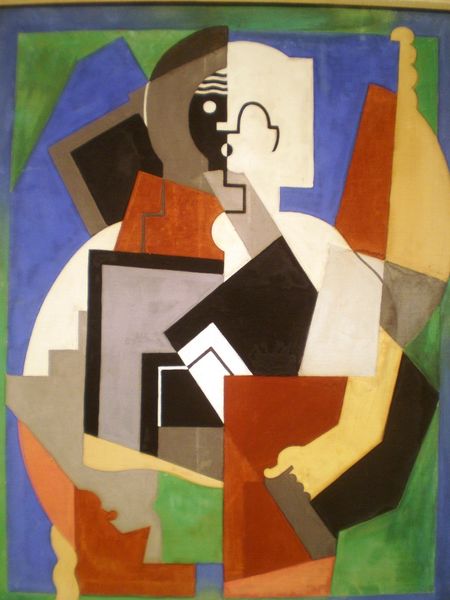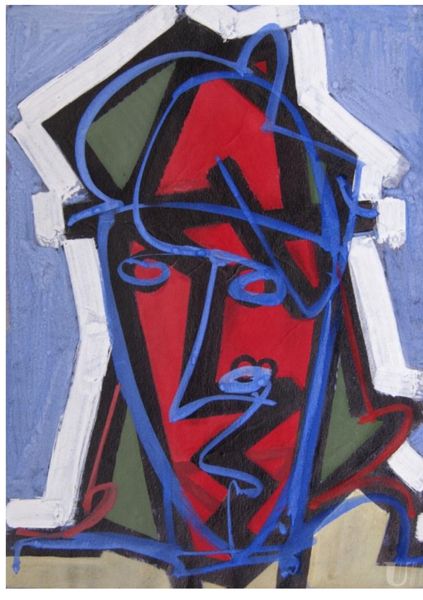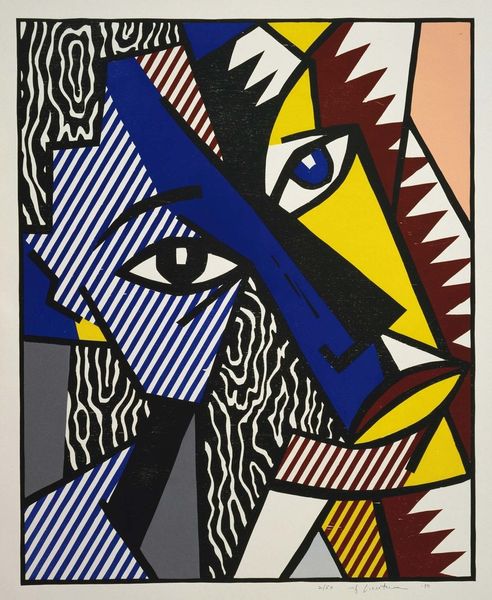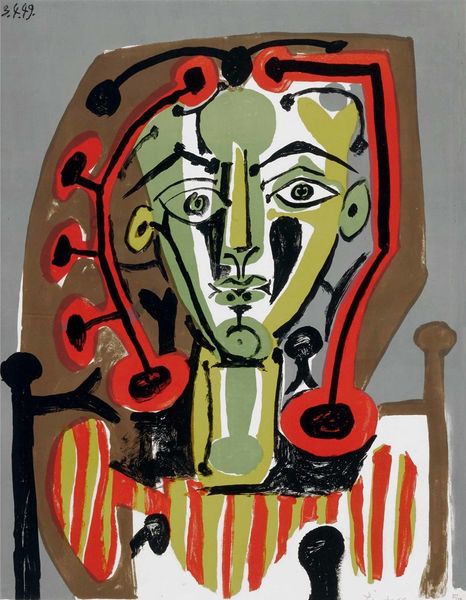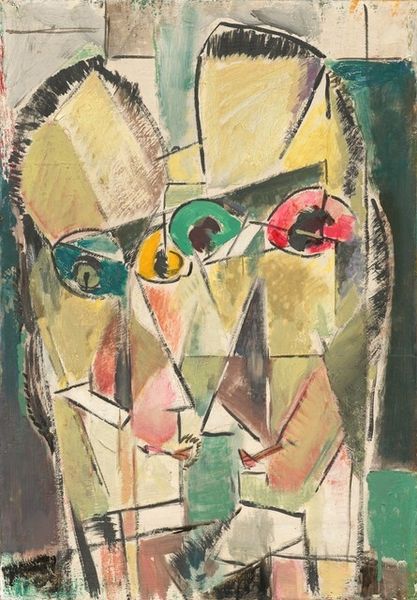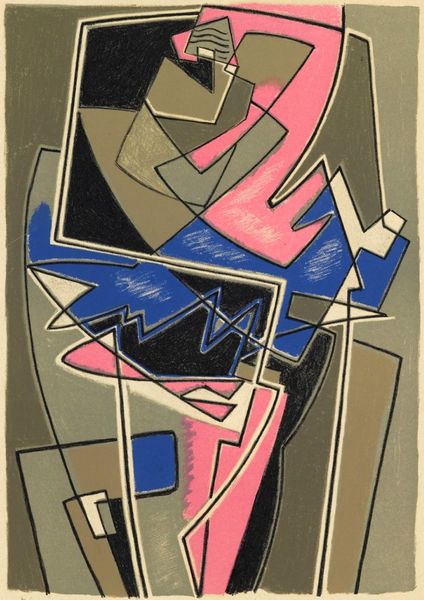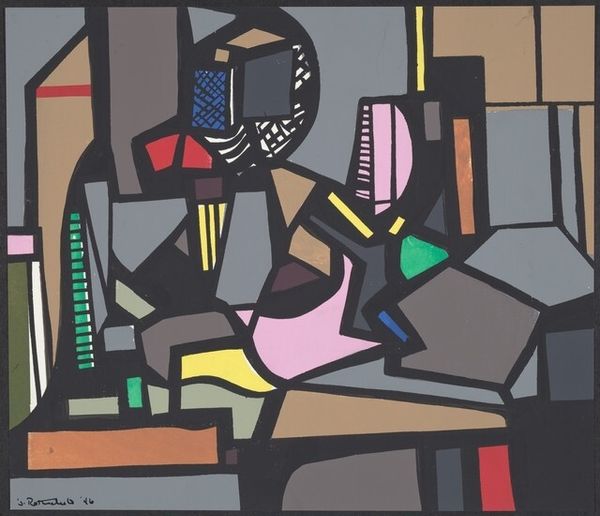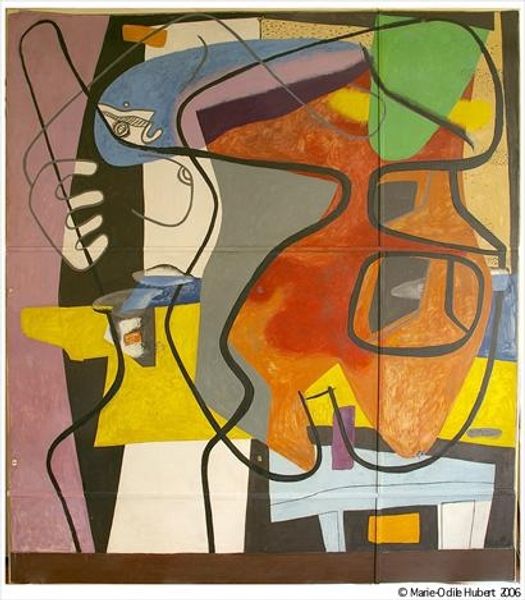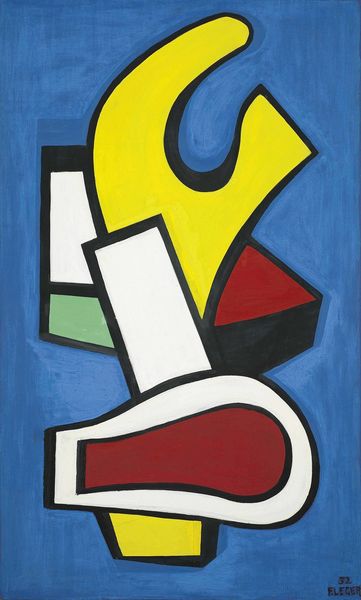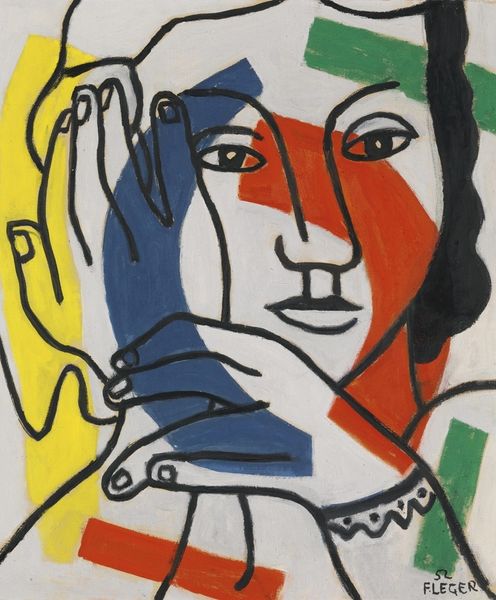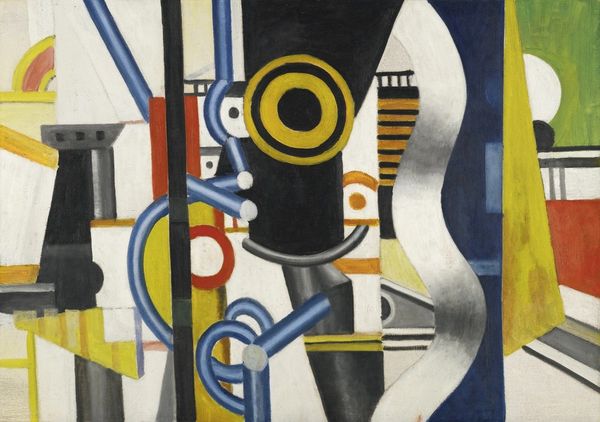
Copyright: Modern Artists: Artvee
Editor: Roy Lichtenstein's "Dr. Waldmann," created in 1980, is a fascinating print. The sharp geometric shapes and bold colors give it such a strong visual impact. I'm curious, what's your perspective on this piece, considering Lichtenstein's background? Curator: For me, this work is very interesting as a material object and signifier of the broader cultural context. It makes sense to consider Lichtenstein's production methods; the silkscreen technique, a mechanical reproduction, is itself a statement. Editor: A statement about what, exactly? Curator: About the accessibility and democratization of art. Lichtenstein deliberately uses techniques associated with mass production to challenge the traditional, elevated status of unique art objects. How do the graphic lines and flat color planes speak to this? Editor: Well, it feels like he's removing the artist's hand, focusing on design and reproducibility over personal expression. It's like he’s creating a brand, in a way. Curator: Precisely. Lichtenstein appropriated and transformed pre-existing imagery and exploited mass-production techniques such as Ben-Day dots; so in his selection and application of materials, what assumptions does he then confront? Editor: That art has to be 'original,' maybe? And I suppose the 'high art' versus 'low art' divide... the blurring of those boundaries by bringing commercial printing processes into the gallery space. Curator: Yes! It asks us to consider how materials and processes, including those related to mass culture, are valued and used to construct meaning. Have you had a shift in perspective? Editor: Definitely. I see it less as just a cool image and more as a commentary on the industrialization of art. It gives you a lot to consider. Curator: Exactly. Looking closely at how it’s made opens up wider questions about labor, consumption, and value in the art world.
Comments
No comments
Be the first to comment and join the conversation on the ultimate creative platform.
